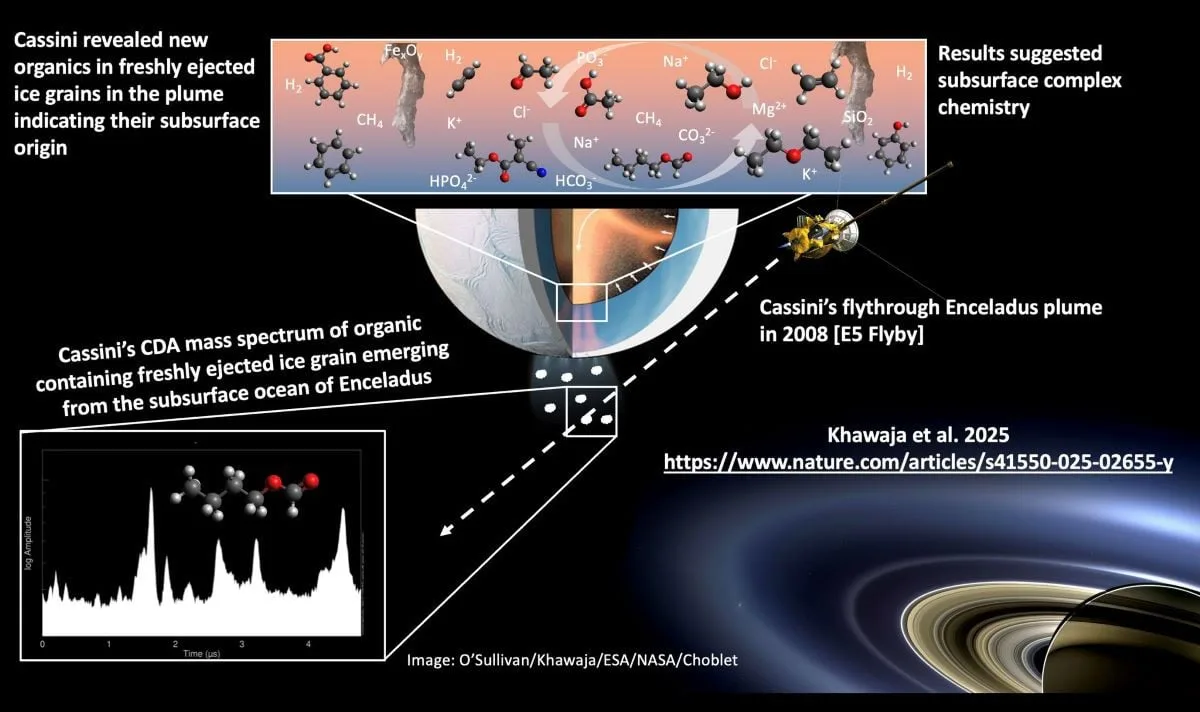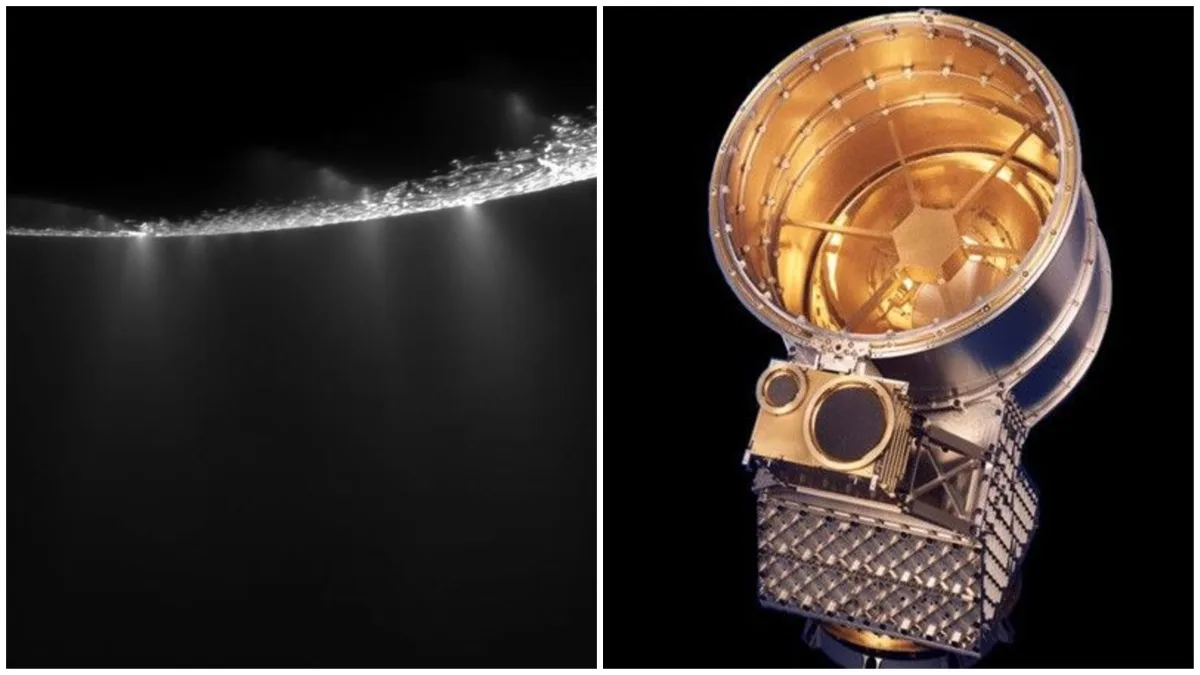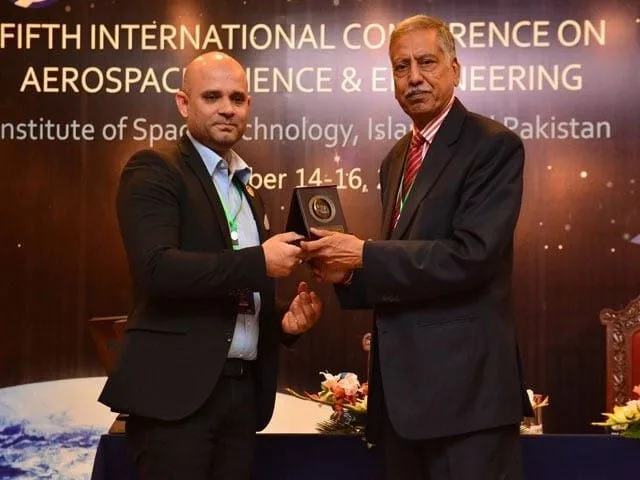Key Takeaways
- Complex organic molecules found in Enceladus’s ocean
- Molecules include esters, ethers, aliphatic and aromatic types
- Cassini spacecraft data revealed chemistry of subsurface water
BERLIN — Dr. Nozair Khawaja, a Pakistan-born astrobiologist at Freie Universität Berlin, has identified complex organic molecules in the subsurface ocean of Enceladus, Saturn’s icy moon.
The discovery, published October 1 in Nature Astronomy, reveals multiple categories of carbon-containing compounds that could support the development of extraterrestrial life.
The research team analyzed data from NASA’s Cassini spacecraft, focusing on ice grains ejected from geyser-like jets at the moon’s southern pole.

These particles form Saturn’s E-ring and contain chemical signatures from the ocean hidden beneath Enceladus’s frozen crust. Dr. Khawaja told The Express Tribune they detected esters, ethers, alkenes, and aromatic molecules with nitrogen and oxygen components.
“These molecules show us the range of complex chemistry occurring in Enceladus’s ocean,” said Dr. Khawaja.
“They can serve as intermediates for more complex biological compounds, though they can also form without life’s involvement.” The molecules remained unaffected by space radiation, having been sampled minutes after ejection from the moon’s surface.
Enceladus meets three essential conditions for life: liquid water, energy sources, and chemical building blocks.

The 505-kilometer-wide moon contains hydrothermal vents at its ocean floor, similar to Earth’s Lost City Hydrothermal Field in the Atlantic Ocean.
Cassini’s Cosmic Dust Analyzer previously detected phosphates, completing the set of CHNOPS elements (carbon, hydrogen, nitrogen, oxygen, phosphorus, sulphur) necessary for life as we know it.
Who is Dr. Nozair Khawaja?
Dr. Khawaja, born in Wazirabad, Pakistan, completed his Master’s in Astronomy and Space Sciences at Punjab University before earning a PhD in Geosciences from Heidelberg University.

His work with Cassini’s Cosmic Dust Analyzer earned him NASA’s Group Achievement Award in 2019 and the Horneck-Brack Award from the European Astrobiology Network Association in 2018.
The Cassini-Huygens mission traveled 3.5 billion kilometers after its 1997 launch, reaching Saturn in 2004.
During its 13-year orbit, the spacecraft collected thousands of ice grains during flybys through Saturn’s E-ring. The spectrometer data provided direct evidence of water-rock interactions occurring deep beneath the moon’s icy shell.
“Enceladus remains the prime target for answering whether life exists beyond Earth,” Dr. Khawaja stated.
“Our findings will guide future missions to this fascinating world.”
While confirming the presence of life requires further exploration, the discovery represents the most compelling evidence yet of habitable conditions elsewhere in our solar system.

